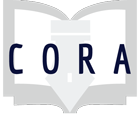Assignment
Whose Shoulders Are You Standing On? Inclusive Citation Practices in Literature Reviews
When writing a research paper, it can be easy to overlook the human side of scholarship – how being cited in a study (or not) can have real, material consequences, and how social structures can systematically exclude certain people from scholarship. This activity and lesson explores these ideas and gives students strategies for making their literature reviews more inclusive.
All told, this lesson takes about 50 minutes to an hour -- 20-30 minutes for the readings and pre-workshop activity, and 30 minutes of discussion.
| Attachment | Size |
|---|---|
| 20.47 KB |
- Students will be able to articular some of the material consequences of citation practices in scholarly and research fields.
- Students will be able to identify baseline strategies for practicing inclusive citation in their fields of study.
- Students will be able to consider alternative sources of authority in their fields of study.
Information Literacy concepts:
Individual or Group:
Ability Level:
This flipped-classroom workshop was first implemented in an extracurricular summer undergraduate workshop series. It was one of many topics offered in the series, and meant to complement topics such as "Finding Full-Text Articles" and "Writing a Literature Review." The workshop has been held virtually over Blackboard and Zoom, though it can certainly be adapted to an in-person setting.
Readings:
1: Maha Bali, Inclusive Citation: How Diverse Are Your References?
2: Rachel Pells, Understanding the Extent of Gender Gap in Citation
Activity:
1. After finishing the readings, complete the following activity analyzing the citation practices of a research paper of your choice. Choose either:
- your own literature review up to this point, or
- a scholarly article you’re considering for your literature review.
Your task is to briefly analyze the gender dynamics of your chosen research paper's works cited page (up to 20 sources, max). Based on what you can infer of the genders of the authors cited, what do you notice? Is there a balance or imbalance of gender among the authors cited?
2. Respond to this discussion board post with what you noticed during your analysis and what any gender gap or lack thereof says to you about whose voices are valued in your field.
Instructor's note: In order to remain manageable, this activity asked students to make assumptions about gender based on superficial characteristics and sort those genders largely into a binary. Some brief classroom time was spent unpacking how, in reality, gender is a complex spectrum.


Comments
I am saving this lesson plan